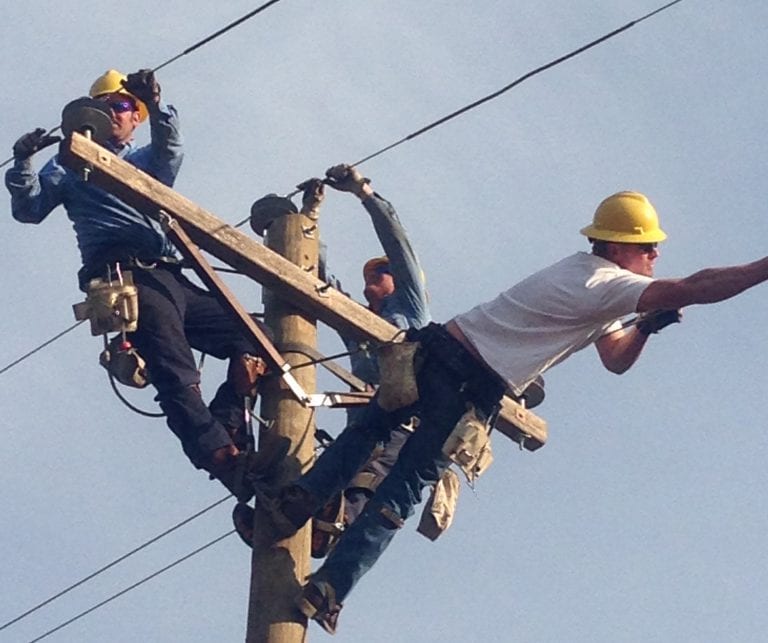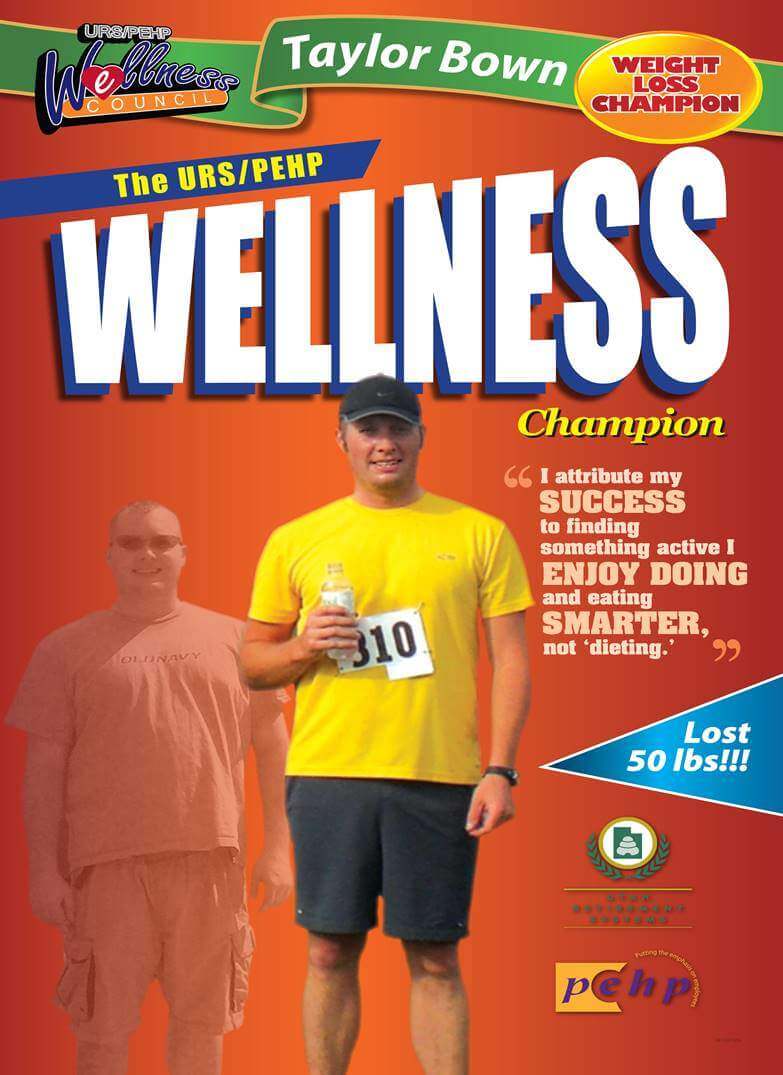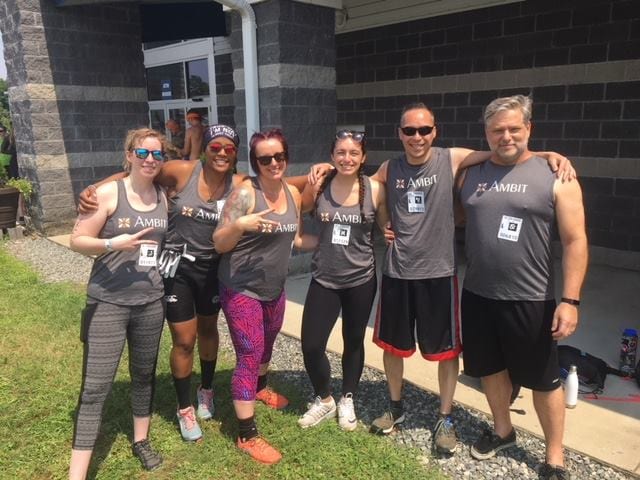Wellness programs are designed to help both white-collar and blue-collar workers improve health. Blue-collar workers have many barriers to health not shared by white-collar workers so only the best wellness program ideas for blue-collar workers will get results.
The term “blue-collar worker,” is a general term to describe employment positions that require physical activity. These jobs include employment in the transportation, manufacturing, agricultural, mining, construction and other similar industries.
Generally speaking, it can be challenging to get high wellness program participation among blue-collar workers. Compared to other workers, blue-collar workers tend to have higher rates of tobacco use and obesity.

They are less likely to have medical insurance and are more likely to report that they don’t have a primary care physician or get regular dental care. Blue-collar workers tend to have lower incomes. And these differences exist for both male and female blue-collar workers.
For a variety of reasons, blue-collar workers are less likely to engage in wellness programs even though they stand to gain the most.
WellSteps has worked with all sorts of blue-collar groups. These include tug boat operators, coal miners, truckers, plant operators, sewer workers, farmers and many more. Each group has their own unique challenges and cultures.
We have learned much from these experiences and we want to share what we know. These following ideas have proven effective at helping blue-collar workers to engage in wellness programs and improve health.
5 Wellness Program Ideas for Blue-Collar Workers

1. Simpler is Always Better
A blue-collar wellness program has to be simple. Blue-collar workers often work up to 60 hours a week outside, with their hands, in the blistering heat or frigid cold temperatures.
They start early and end late. They often work in dangerous, highly task oriented environments. A failure to concentrate can often be deadly.
They don’t have tons of time throughout the day to get on a computer or their phone to see what wellness activities are available. Any wellness activities or programs need to be simple and easy to complete.
For example, a simple text message first thing in the morning that says “Don’t forget to buckle up on your way to work,” or “Don’t forget to eat your fruits and veggies” can offer a quick health reminder.

WellSteps has had great success using short, effective videos to help employees adopt and maintain healthy behaviors. These videos can be translated and participants can complete a wellness program task in just a minute or two.
Text messages, video streaming, onsite meetings, paper pencil forms, and regular communications make participating in wellness easy and simple.
2. Make It Convenient for Blue-Collar Employees to Participate in Wellness
In addition to being simple, the wellness program must be convenient to their work schedule. That means anyone can access the program from anywhere and at any time. The entire WellSteps wellness program can be accessed on any web enabled device OR in printed format.
In most cases, we use a combination of communication methods to ensure we are making it possible for everyone to participate.
A great example of how this works can be seen in our maritime workers.

When out in the middle of the water there is no cell service of any kind. So employees often complete wellness activities on paper print outs, and either fax or personally hand the tracking sheets to their coordinators when they get back to shore.
One wellness coordinator from a customer who operates a large construction company says their employees love doing steps challenges through our Wellness platform. She provided two main reasons:
- Their employees are usually very active throughout the day, so giving them wellness credit for their daily steps makes sense.
- The wellness platform allows them to automatically input their steps either through syncing a fitness device (FitBit/AppleWatch/Garmin/Strava/etc.) if they have one, OR manually inputting their steps based on what their phone’s internal GPS says.
This is a perfect example of making a wellness activity easy and convenient for blue-collar workers. The more convenient the program is, the more employees will participate.

If your program isn’t accessible or convenient for everyone from the smartphone user to the flip phone user, perhaps you need to rethink your strategy to determine if your program is giving your employees the best chance to engage.
3. Work Closely With the Onsite Wellness Coordinator
Having someone within the organization who is actively talking with employees to gather their wellness comments or concerns, and then applying that information is crucial. This counts double if there are blue-collar workers involved.
Our most successful blue-collar wellness progarms have engaged wellness coordinators who are willing to help make the wellness program a success.
Onsite wellness coordinators who are involved with their wellness vendors will be able to discuss program reports, employee testimonials and employee feedback. More importantly, they use that information to guide the development and adjustments needed to the wellness program.
This ensures that the wellness program doesn’t become stagnant and addresses the specific wants and needs of employees. Each worksite has unique challenges and cultures. Wellness programs will be more successful if they are carefully crafted to match each worksite.

For example, one WellSteps customer is a large U.S. trucking company. Truck drivers often have a difficult time finding healthy food options. Truck-stops are not known for offering many health food options. With the help of the onsite wellness coordinator, we developed the Stop and Go Fast Food Nutrition Guide. It helps truckers find healthier food options. This guide is free. Learn more here.

4. Make Wellness Participation Meaningful for Blue-collar Workers
Wellness programs are designed to help people live long, healthy lives. Unfortunately, not everyone wants to stop smoking, start exercising, or change diet. Sometimes people need to be motivated before they will make lifestyle changes.
That is why incentive plans for blue collar employees, both intrinsic and extrinsic, are so important. In an earlier blog post found here we give everything any company needs to offer effective wellness incentives .
The main challenge for blue-collar workers is to determine the best wellness incentive ideas.
We have found over the years that blue-collar groups really enjoy earning PTO (paid time off) through the completion of various wellness activities. Paid Time Off as a wellness incentive can also be called a benefits-based incentive because they are baked into benefits packages.
Along with earning PTO we have also noticed that HSA contributions and health insurance premium reductions are a big hit with our blue-collar groups.
Some worksite prefer to offer gift cards as incentives. These can be especially motivational if the cards can be redeemed at locations highly favored by some blue-collar employees. We’ve used gift cards from Bass Pro Shop, Home Depot, local sports competitions and local restaurants.
All in all, the main objective is finding out the incentives that are most meaningful to the population and integrating them into the wellness strategy.
Here is a comprehensive list of different incentive plans WellSteps clients are currently utilizing. In reading this list, you will likely get some great wellness incentive ideas you can try.
Lastly, don’t neglect the motivational power of peer support and peer pressure. When employees see other employees enjoying the benefits of healthy living, they are more likely to make changes. Positive peer pressure is a powerful tool of persuasion.
There are a lot of wellness program ideas for blue-collar workers. Just ask them what they would value as an incentive.

5. Be Patient – Good Health Takes Time
Many employers think they just purchase a wellness program and “poof” everyone is healthy and thousands of dollars of health care costs are saved. If it were only that easy!
Approximately 9% of employees are diabetic. It takes years of inactivity, weight gain, and poor nutrition for the disease to appear. Diabetes does not happen over night. Likewise, preventing, arresting, and reversing chronic diseases takes time.
Can a wellness program help their employees change unhealthy behaviors and adopt a healthier lifestyle? Yes! Can a wellness program help them save money over time? Of course! However, just like getting chronic diseases, getting healthy takes time.

So the question remains, “How long do we need to be patient until we see results?” Nearly all experts agree that it takes up to three years for the costs of the participants and non-participants to diverge. Changing human behavior that has developed over a lifetime will not happen overnight.
Instead of focusing solely on the long-term benefits of your wellness program, break your wellness program progress down into short-term benchmarks. At the beginning of the second year (after one year is complete), work toward a certain level of participation. We like to see at least 50% participation in year one.
At the beginning of the third year, look for improvements in health behaviors and health risks. At the beginning of the fourth year, you are ready to look at reductions in health are costs. This is precisely the approach one client took: Here is exactly what happened after three years of wellness program participation.
Blue-Collar Wellness Program FAQs
What should be included in an employee wellness program?
The best programs promote all areas of health: mental, physical, nutritional, financial, etc. However, it is helpful to establish a few focus areas before your program begins. At WellSteps we have a Personal Health Assessment for participants. The data from the assessment provides us with valuable information to better know a company’s population.
Once you know your focus areas, make a plan on how to offer educational materials and behavior change support. Educational materials can be seminars, articles from credible sources, or a quick video. However, blue-collar workers are on the go for long hours each day. Their educational materials need to be efficient and convenient. You can offer behavior change support through wellness activities and incentives. For more ideas, click here.
What are wellness activities?
A wellness activity is any action that helps the employee create a healthy lifestyle. They can be recurring or something that is done once a year. You can also do team building activities for blue collar workers. Here are a few examples:
- I had a visit with my primary care provider this year.
- I drank at least 64oz of water most days.
- I took at least 8,000 steps each day.
- I slept for at least 7 hours most days.
How do blue-collar workers stay healthy?
In short, the habits that create a healthy life are the same for all professions: eating a balanced diet, getting a healthy amount of sleep, exercising often, maintaining a fulfilling social life, and focusing on mental health. Blue-collar workers may feel that their schedule does not allow them to prioritize health. That is why it is important to provide specific strategies to reach health goals. Some occupations might have to eat out frequently. But, it is possible to still make healthy fast food choices with the right knowledge and tools. We encourage companies to do all in their power to provide their employees with the tools for a better quality of life.
BONUS: Here Are Even More Wellness Program Ideas for Blue-Collar Workers You Might Find Helpful
18 Corporate Wellness Ideas and Wellness Activities Any Worksite Can Do
16 Workplace Health and Well-being Ideas, Activities, and Initiatives (for any budget)
Hi Dr. Aldana,
I am in a Public Health program and worked at a wonderful corporate wellness center. Obviously Covid we are currently not working. Although the CDC sites studies on workplace wellness, and the importance of these programs I do not see where there is any funding for these programs. I know you would be a good person to ask? Being in this program is very dillusioned by all the money being pumped into the needle exchange program…ect… and over 40% of Americans are obese, and most chronic disease is preventable.
Hi Debbie,
The CDC has actually funded a variety of worksite wellness research projects. I’ve been on the CDC review sections that have evaluated much of this work. Each time I work with the CDC, they have a new section director and interest in wellness is only as good as the next director. To my knowledge they have never funded any wellness programming outside of wellness related research studies. I’m not sure why, but there are few, if any, in congress asking for the CDC to do more in this area. I suppose the wellness industry needs to hire and fund a big army of lobbyists if we are ever going to seem much federal support.
Steve
Thank you Dr. Aldana,
I am an RN, 25 year’s army who experienced severe combat stress which took me out of clinical nursing. I am mature, 58, and I started teaching “Aerobics” when I was 18. I continued to teach throughout my college education and Army. Getting certified in various formats. I had the opportunity to work for Hunter Industries in San Marcos, CA. We had a 10,000 Sq. ft. wellness center. Gym, group exercise room, fitness assessments, meal planning, programs every 3 or 4 months. Like “Fitball” during football season, teams like football teams, with weekly challenges to get the football point. We had a kitchen with nutri-bullets, ect…I is such a great place, we only were a team of 4 that ran it and got paid low wages. The more I study public health the more disillusioned I am. I am white middle class, and I have not heard of the healthy people 2020 for example programs, and there are many as you know. If the CDC thinks that corporate, or employee wellness is the way to go, they need to fund it. Just my opinion. I will stay in touch as I love your site and most likely will thesis in the area. Debbie
Comments are closed.